In memoriam: Enzo Mari (1932-2020)
Remembering Italian designer Enzo Mari, who revolutionised design thinking through his radical designs and his political and social ideas
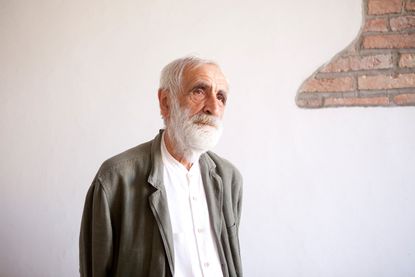
Italian designer Enzo Mari died in Milan on Monday 19 October at the age of 88. A designer as well as an artist, critic and theorist, Mari has been an inspiration and reference point for several generations of designers and design entrepreneurs, and his radical ideas have helped shape contemporary design and still have an impact today.
Mari was born in 1932 in Cerano, in the Piedmont region of Italy, and moved to Milan in 1947 taking on a variety of jobs before enrolling at the Accademia di Belle Arti di Brera in 1952. There, he studied art and literature, with a particular interest in the psychology of vision, the planning of perceptive structures and the methodology of design.
In the late 1950s he met entrepreneur Bruno Danese (who with wife Jacqueline Vodoz launched the eponymous design brand described as ‘long-term project to bring art into everyday life’, changing the face of industrial design), an encounter that helped form Mari’s career as a designer.
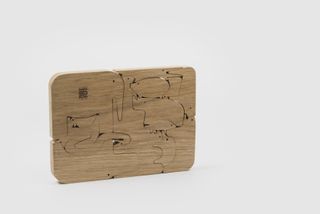
‘16 Animali’ wooden puzzle by Enzo Mari for Danese
With Danese, Mari created one of his best known and loved pieces, the ‘16 Animali’ wooden puzzle. From a single piece of oak wood, Mari designed 16 animals through one continuous cut, an object that was inspired by his research into Scandinavian children’s toys, and his own children. Each animal is designed as an object of its own, also fitting neatly within a minimalist puzzle structure: an exercise in formal creativity.
During his 60-year career, Mari went on to conceive over 1500 designs for companies such as Danese, Driade, Artemide, Zanotta and Magis, as well as illustrations, books with Einaudi and Bollati Boringhieri and imaginative works for children now edited by Italian publisher Corraini.

A printed draft of ‘La mela e la farfalla’ (the apple and the butterfly), from 1958
Some of his best known objects include the Putrella tray for Danese, intuitively created from a bent industrial I-bar, an archetypal shape in which Mari recognised an expressive potential. Another iconic piece he designed for Danese in 1966 is the Timor perpetual calendar, a graphic tool that represents his practical approach to creation. Made of plastic cards fixed to a central pivot, the design was inspired by railway signs and long-lasting functionality. Swiss architect Max Bill said that Mari thought creatively and built logically, a fitting description of the duality of his oeuvre.
Although Mari was perhaps more intuitively known for his designs, it is his ideas which make him one of the most radical, revolutionary thinkers of his generation. Mari’s own political views veered towards communism, something that he made sure to be reflected in his work. He saw design as a democratic utopia, a designer’s responsibility towards its community. He claimed that his work was aimed at creating a better world, by looking at future scenarios that he would tackle with his projects.
His political ideas were reflected in his definition of ‘good design’, which he described as sustainable, accessible, functional, well made, emotionally resonant, enduring, socially beneficial, beautiful, economic and affordable.
Wallpaper* Newsletter
Receive our daily digest of inspiration, escapism and design stories from around the world direct to your inbox

Installation box to make a 1:5 model of the Sedia P, based on the Autoprogettazione principles
A project which is perhaps Mari’s most referenced idea and a fitting demonstration of his thinking is the Proposta per un'Autoprogettazione (proposal for a self-design) series. A 1974 book presented as an instruction manual to create furniture simply using rough boards and nails, Autoprogettazione represented an economical way to produce furniture while sharing knowledge and creating awareness of the act of making.
Mari closed his studio in 2014, but his impact has always been tangible within the design industry and among creatives from all fields. His creative power was celebrated through a 2020 exhibition at Milan’s Triennale Design Museum. Curated by Hans Ulrich Obrist with Francesca Giacomelli, the exhibition offered both an in-depth overview of his work but also an opportunity for artists and designers to pay tribute to his impact. Contributions from the likes of artists Rirkrit Tiravanija, Danh Vō, the late designer Nanda Vigo, and designer Virgil Abloh among many others made it clear that Mari’s contributions to the creative industries have been far-reaching, and that his legacy will live on.
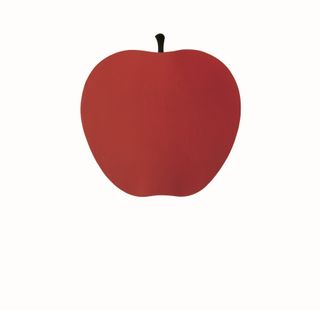
La serie della natura N. 1: la mela (the nature series N.1: the apple), Silkscreen printing on texilina, Danese.

I luoghi deputati, tempera on paper, 1953.

Images from the book L’uovo e la gallina (the egg and the hen), 1969
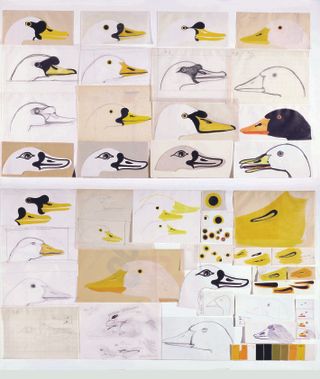
Some drawing exercises from his Serie della Natura, 1967

Il Puzzle, istruzioni per l’uso, 2009
Rosa Bertoli was born in Udine, Italy, and now lives in London. Since 2014, she has been the Design Editor of Wallpaper*, where she oversees design content for the print and online editions, as well as special editorial projects. Through her role at Wallpaper*, she has written extensively about all areas of design. Rosa has been speaker and moderator for various design talks and conferences including London Craft Week, Maison & Objet, The Italian Cultural Institute (London), Clippings, Zaha Hadid Design, Kartell and Frieze Art Fair. Rosa has been on judging panels for the Chart Architecture Award, the Dutch Design Awards and the DesignGuild Marks. She has written for numerous English and Italian language publications, and worked as a content and communication consultant for fashion and design brands.
-
 The 2024 Ivor Novello nominations for songwriting have been revealed
The 2024 Ivor Novello nominations for songwriting have been revealed77 British and Irish songwriters and composers make up this year's nominees, announced tonight at London's Groucho Club
By Charlotte Gunn Published
-
 Why Bollinger’s La Grande Année 2015 champagne is worth celebrating
Why Bollinger’s La Grande Année 2015 champagne is worth celebratingChampagne Bollinger unveils La Grande Année 2015 and La Grande Année Rosé 2015, two outstanding cuvées from an exceptional year in wine-making
By Melina Keays Published
-
 Lexus installation explores time at Milan Design Week 2024
Lexus installation explores time at Milan Design Week 2024Lexus brought designer Hideki Yoshimoto’s ‘Beyond the Horizon’ to Milan’s Art Point, part of its ongoing series of collaborations with Fuorisalone
By Nargess Shahmanesh Banks Published
-
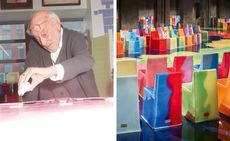 Design world mourns Gaetano Pesce (1939-2024), the ‘most radical of radicals’
Design world mourns Gaetano Pesce (1939-2024), the ‘most radical of radicals’We remember Gaetano Pesce, the rule-breaking Italian design visionary, who has died in New York aged 84
By Rosa Bertoli Published
-
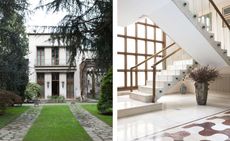 Alcova announces two historical locations for its 2024 edition
Alcova announces two historical locations for its 2024 editionPrepare to discover two iconic gems, as Alcova 2024 will take place at Villa Borsani and Villa Bagatti Valsecchi, just outside Milan (15 – 21 April 2024)
By Rosa Bertoli Published
-
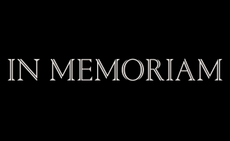 In memoriam: celebrating the lives and work of those we lost in 2023
In memoriam: celebrating the lives and work of those we lost in 2023We honour and remember some of the influential creatives lost during 2023, through the Wallpaper* tributes that ran throughout the year
By Rosa Bertoli Published
-
 In Memoriam: Maria Pergay (1930 – 2023)
In Memoriam: Maria Pergay (1930 – 2023)We remember design dame Maria Pergay, who died on 31 October 2023 aged 93
By Rosa Bertoli Published
-
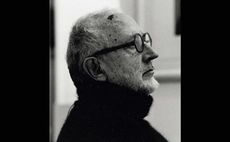 In Memoriam: Andrea Branzi (1938 – 2023)
In Memoriam: Andrea Branzi (1938 – 2023)We remember Italian design radical Andrea Branzi, who died on 9 October 2023
By Rosa Bertoli Published
-
 Lake Como Design Festival 2023, across historic venues, shows the diverse roles design plays in shaping our world
Lake Como Design Festival 2023, across historic venues, shows the diverse roles design plays in shaping our worldLake Como Design Festival 2023 (until 24 September 2023) features a series of exhibitions inspired by Pliny the Elder's Natural History
By Maria Cristina Didero Published
-
 In Memoriam: Rodolfo Dordoni (1954 - 2023)
In Memoriam: Rodolfo Dordoni (1954 - 2023)We remember Italian designer and architect Rodolfo Dordoni, who died on 1 August 2023
By Rosa Bertoli Published
-
 In memoriam: Thomas Eyck (1964 – 2023)
In memoriam: Thomas Eyck (1964 – 2023)We remember Dutch design entrepreneur Thomas Eyck, a champion of craft, materiality and beauty who helped elevate many of the Netherlands’ contemporary design stars
By Rosa Bertoli Published